Students Develop Apps to Support Local Community in Hokota, Japan
The inaugural Hokota Wagamama Lab challenged participants to solve their own problems with the help of technology.
Two students work on their app for the Hokota Wagamama Lab challenge.
High school, university, and graduate students from Hokota, Japan, participated in the first-ever Hokota Wagamama Lab, which challenged participants to create apps using MIT App Inventor to address the needs of their local community. The word wagamama refers to an attitude or mindset that seeks to fulfill one’s wishes and desires. With this attitude in mind, the Hokota Wagamama Lab aspired to solve the daily inconveniences and inequities of the city of Hokota.
Located in the Ibaraki Prefecture of Japan, Hokota has a population of 45,973 and boasts the highest production of vegetables in the country. The city faces a number of challenges, including a declining birthrate, aging population, increase in vacant homes, and outflow of young people to other cities. The Wagamama Lab was created in part to engage the younger population to tackle challenges in their community. Another goal was to instill the idea that Hokota residents could solve their own problems using digital technology, rather than waiting for someone else to address their issues.
Thinking Deeply about Hokota
The eleven students who joined the challenge in January were divided into three teams. Each team brainstormed what problem they wanted to solve, why they wanted to solve it, and how they could solve it with an app. Over the course of two months, the teams grew closer, often having discussions late into the night. They were talking about issues they normally did not interact with, and thinking critically about why they were working on their app and how Hokota could benefit. One of the university students said, “It was an opportunity to think deeply about Hokota like never before.”
“It was an opportunity to think deeply about Hokota City like never before.”
By the end of the program, all three teams had successfully developed apps using MIT App Inventor. They were restricted to using only three features in App Inventor: pressing buttons, reading text out loud, and connecting to a website. This ensured that anyone could use the app easily without being confused or overwhelmed. The teams were creative in using the limited feature set while still making their apps useful. They presented their work at a closing ceremony in mid-March.
Crowdsourcing Rides to the Station
The first team consisted of three college students who had left Hokota to study in Tokyo. When they previously lived in Hokota, they all had the same experience of burdening their family to pick them up from the train station or school. One team member said, “For six years, my sister and I asked our parents to pick us up and drop us off at school everyday. When no one in my family could pick me up, my mom contacted my friends’ parents who lived nearby. I remember feeling very apologetic for inconveniencing them.”
Screenshots of the Hokonotti app, which allows community members to help each other with station pickup and dropoff.
The team decided to survey the community about their transportation needs and patterns. Based on the results, they created Hokonotti, an app for community members to help each other with pickup and dropoff, so they would not have to be dependent on their families. The most notable feature of the app is the pickup management page, where family members and neighbors can indicate their availability and easily coordinate pickup. In cases where no one is available, the app connects users to Hokota’s on-demand taxi system with the simple click of a button.
Welcoming Foreigners and Registering Vacant Homes
The second team was composed of a wide range of ages, including high school, university, and graduate students. They took it upon themselves to make two apps for the challenge.
Screenshots from an app that helps Indonesians residing in Hokota acclimate to the local culture.
For the first app, they wanted to help Indonesians living in Hokota feel more comfortable with the new culture. Hokota has the highest percentage of foreign residents in the Ibaraki Prefecture, exceeding 5% of the population. One team member frequently saw Indonesian immigrants working on his family’s farm, and noticed how difficult it could be because of language and cultural barriers. In response, the team created an app to introduce Indonesian residents to the local culture of Hokota. The app explains the Ibaraki dialect, informs users about Japanese etiquette, lists stores that carry halal food, and suggests tourist attractions in the city.
Screenshots from an app that provides information about Hokota’s vacant house bank.
The team’s second app addresses the issue of vacant houses, which are on the rise in Hokota. Many houses are left abandoned because parents move into nursing homes or pass away, while their children remain in other cities. As a result, the houses are left unused and deteriorate over time. In 2018, Hokota launched a service called the vacant house bank, where owners can register their empty homes, find a buyer, and receive a subsidy for renovation. However, many people do not know about the service or find the process complicated. The team created their second app to make it easier to register with the vacant house bank. It contains detailed explanations about the bank, required documentation, and steps for registration.
Assisting Farmers with Knee Pain
The last team consisted of two high school students born and raised in Hokota City, and one university student studying in Tokyo. All three team members discovered that they had elderly family members with knee pain resulting from farm work. In fact, this is common in Hokota, where there is a large farming population due to the high production of vegetables. The average age of Japanese farmers is rising, with those over the age of sixty comprising a majority of the population.
Screenshots from an app that assists elderly farmers who have knee pain.
To help the aging members of their community, the team developed an app with three main functions: calling taxis, looking up recipes that require minimal standing, and finding accessible shops with elevators. They carefully considered their audience in the app design, adding explanations for the features and the ability to read aloud instructions.
“We can change the current situation with social and regional issues by ourselves. Don’t wait for the problem to be solved, you can solve it yourself.”
Everyone was impressed by the apps developed by the students. Masao Ishihara, the first MIT App Inventor Expert Trainer in Japan, commented, “We can change the current situation with social and regional issues by ourselves. Don't wait for the problem to be solved, you can solve it yourself. I think it's been a long time since I've been able to actually feel it, so let's continue this.”
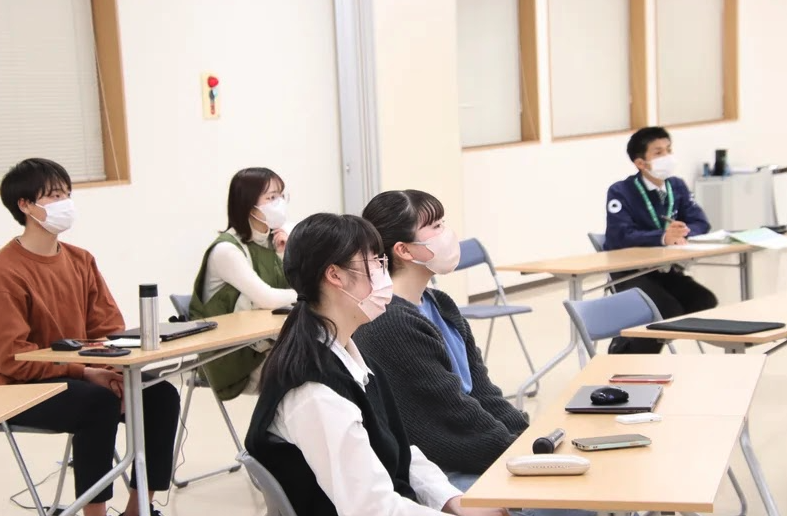
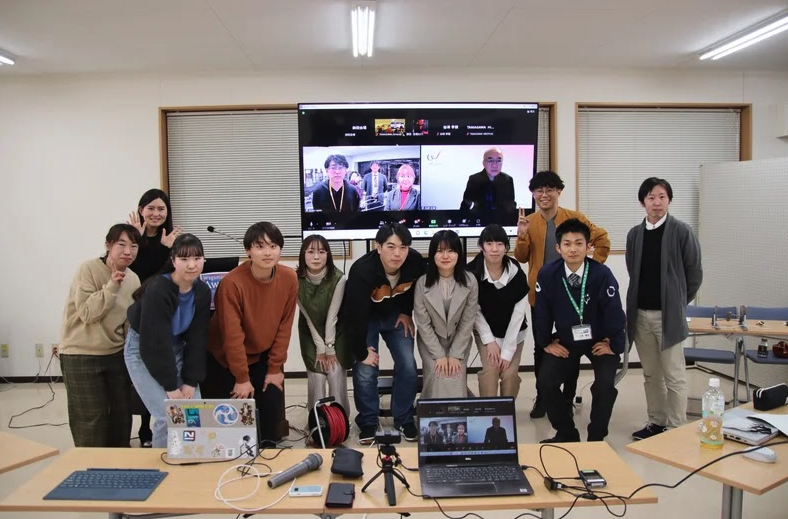
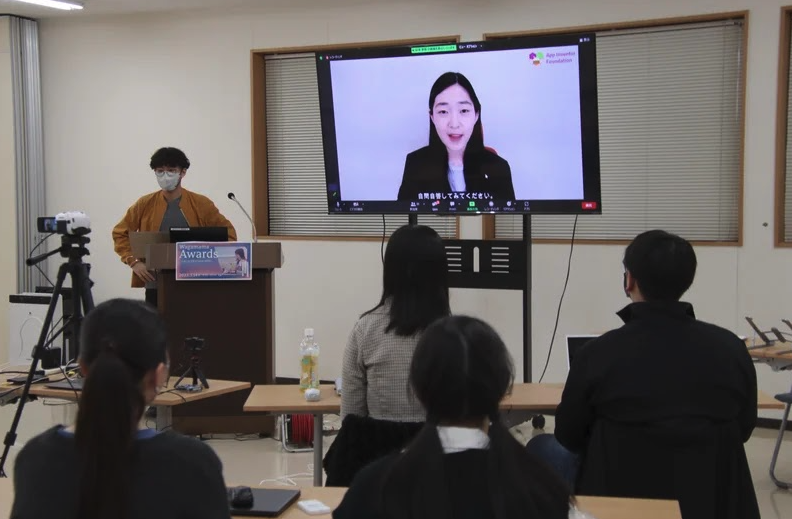
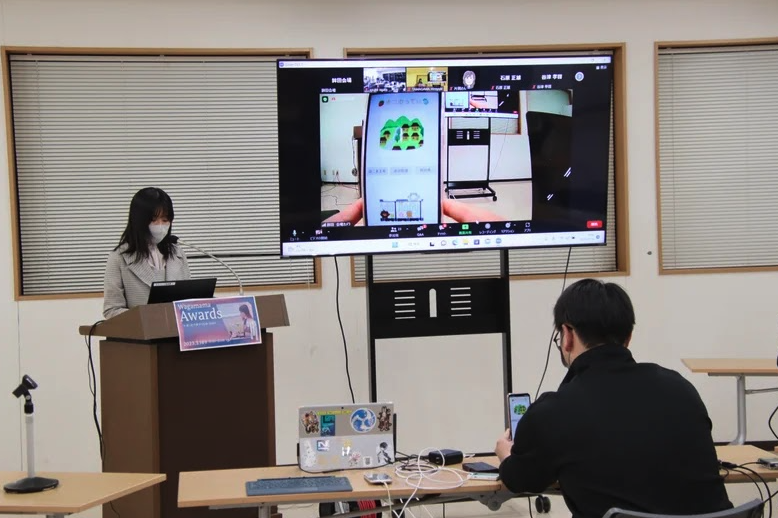
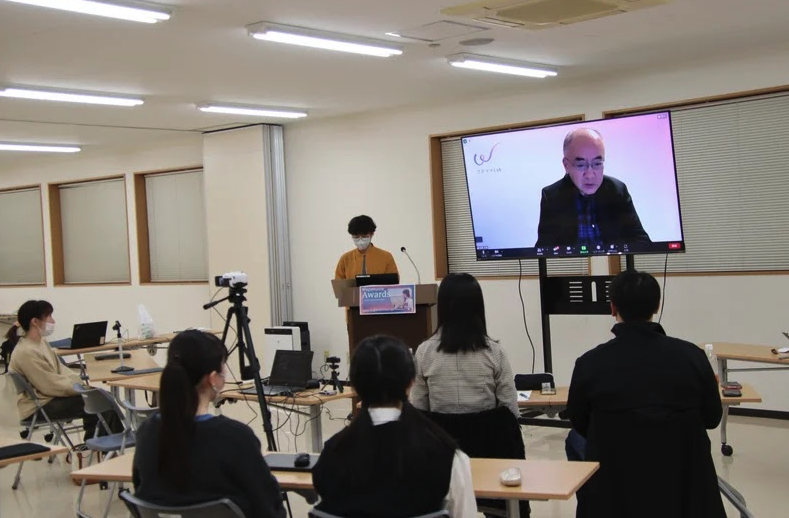
The original version of this article was written in Japanese by Irodori, Inc. It has been translated to English and edited for length and clarity.





